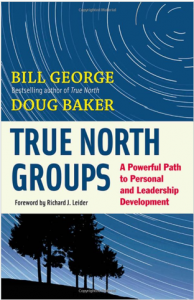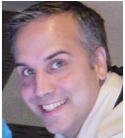Books We Trust: True North Groups, By Bill George
 This is the seventh in a series called Books We Trust.
This is the seventh in a series called Books We Trust.
Bill George is author (with Peter Sims) of True North: Discover Your Authentic Leadership. Part of the J-B Warren Bennis series, it has been widely read and praised. In his new book, True North Groups, he (with co-author Doug Baker) focuses on how True North precepts can get established for people and organizations.
Bill George is another small-town Midwesterner who made it (very) big. After punching his ticket in the McNamara Defense Department days, he eventually spent a decade each with Litton Industries, Honeywell, and Medtronic (where he was CEO).
These days he teaches leadership at Harvard Business School and serves on the Board of several Very Big companies. Click to his bio; you’ll be impressed.
Bill does not waste time; we got right into it.
Capitalism: Back to the Future
Trusted Advisor Associates: Bill, after your MBA, you spent decades in big-business companies that worked closely with government. How did you feel watching the progression of Milton Friedman, Michael Jensen, Ayn Rand, Alan Greenspan, and the doctrine of shareholder value—an ideology that pitted business against government?
Bill George: Michael Jensen has recanted; he’s writing about ontological leadership with Werner Erhard. Greenspan admitted the flaw in that ideology.
There’s been a total transformation. We have collectively realized the flaws in those old simplistic economic theories; this notion that people are motivated only by self-interest, this is simply not true. Mike Porter is another one, a brilliant guy who is now writing about shared value, not shareholder value.
There is a transformation in business right now of major companies moving away from that old paradigm.
Take Alan Mullally at Ford; he’s changing things there right down to the individual employee level. He is focusing on the long term, on sustainability.
Corporate CEOs today are the best I’ve seen, the best in my lifetime. Besides Mullally at Ford, there’s Palmisano at IBM. Steve Jobs rightly got a lot of credit. All the CEOs I know are moving away from shareholder value to values and vision. Paul Polman at Unilever says, ‟My job is not to serve the shareholder, but to serve the customer.”
TAA: That’s pretty optimistic. What do you think happened?
Bill: It’s just what’s happening, that’s all. These things only happen when you come to realize we were going the wrong way. Think Enron; that was a hugely emblematic event…there were 100 large companies with very large “accounting” problems.
You get a raft of major companies like BMS with a $1.5B accounting adjustment, and that’s not an accounting problem—that’s a failure of leadership. This went way beyond a few crooks; this was a business disaster.
But we’ve seen that. Outside Wall Street, there are a lot of really big companies that are just done thinking that way. Not going back.
Wall Street and Washington
TAA: What about Wall Street?
Bill: Wall Street never ceased. The problem is maximizing short term shareholder value―that’s the best way to go out of business. So it’s really not surprising Wall Street melted down.
Regarding Wall Street, I’m a wait and see guy. There are all new CEOs on Wall Street now―Jamie Dimon and Lloyd Blankfein are the old guys. The new folks are the ones who’ll have to make the call. A guy like Paulson can make $4B selling things short; that’s legal, he does it fair and square, but let’s not kid ourselves that’s value creation—it’s not.
TAA: What about Washington?
Bill: I’d like to see them lead, but we’ve got to take it out of the political arena: we’re just not going to get there via the politicians. They’re more interested in the parochial, ideological interests.
And that’s the greatest sin. We in business lost sight of why we were in business, lost track of the role of leadership in the first place.
Toyota and J&J took their eyes off the ball. Ford’s now beating Toyota, because Toyota took its eye off the long-term, culture/quality ball. And Ford rediscovered it.
I was on the board of Novartis. They always focused on a breakthrough drug to solve unmet patient needs―a drug that is going to advance medicine. Look at Ken Frazier at Merck, Pfizer vs. Merck, he’s pushed to keep up the level of R&D spending. Pfizer’s done the exact opposite. The short-termers keep citing Net Present Value as the driver of short-term focus, but the truth is they don’t know how to do the math right.
[CHG: An aside—read this WSJ article from February 4 of this year detailing Bill’s point: when the two companies announced their opposite strategies, the market drove Merck stock down 2.7%, while Pfizer saw its stock rise by 5.2%. That’s an 8% spread because of announced strategies.
Today, 8 months later, try comparing the two companies’ stock prices; they are back to dead even; the gap is gone. But Merck has the advantage of a tailwind in its R&D momentum; Pfizer gave it up.]
Leadership and True North
TAA: Let’s talk about leadership and bring it back to True North Groups. What should leadership be about?
Bill: Back in the day, HP was just a great company. Dave Packard totally practiced MBWA, management by walking around, a truly humble guy. Four successive CEOs now have gone the wrong way. Leadership matters greatly.
The key issue now is that the leaders’ job is not to exert power, but to empower people, including those who have no direct reports. You have to have an empowered group of employees that are excited about mission and values. If you only bring your head to work, you cut yourself off at the neck; if that’s all you can bring to the game, I’d love to compete with you.
The key issue in leadership is not to develop the next CEO, it’s to develop leaders all over the place. It’s not about developing a few good people at the top, but working on 10,000 or more.
The question is how to develop those leaders: you can’t do it through the old Darwinian GE model. Not everyone should be focused on getting Jeff Immelt’s job. That is just not where the traction is.
That’s where True North groups come in. Turns out that the best way to truly develop individual leadership capabilities is in small groups, made up of peers, of people who tell life stories, where people can find out who they really are. Because if they lead life as a fraud, thinking they’re impressing the world, it won’t work.
Steve Jobs’ most powerful message was to be who you are. Don’t let others’ opinions—Wall Street, recruiters—rob you of the courage to follow your heart. They used to snicker at me at Harvard Business School when I talked like that, but they don’t today.
TAA: How do you find a True North Group, and how do they get it right?
Bill: We found it happens in small groups. You see the success of this small-group phenomenon in affinity groups—AA, the YPO, breast cancer survivor groups, Rick Warren’s Saddleback Church—read Malcolm Gladwell’s explanation of it.
We tried to take this to people who don’t have an affinity group like that; people in business—what are they supposed to do? A great way to define a True North group is to ask yourself, “If I found out I was going to die, who would I talk to?” That’s your group.
TAA: What is it that True North Groups do?
Bill: If you buy the premise that we have to help develop people, this is the way to do it. You don’t go to Wimbledon to play tennis—you start years before. You don’t learn leadership by reading, you learn it by doing it—by living it, and talking about it. And then you need a way to process that.
There are several things we write about in the book that are critical to True North Groups’ success; I’ll highlight a few. One is non-judgmental feedback.The courage to tell it like it is—not ‘brutally,’ because that would come with judgment. Just speaking the truth, straight-up.
TAA: This is not leadership development ala Jack Welch’s GE.
Bill: A lot of people still want to use leadership development as a selection process; the big boss comes in and watches a while and says this guy’s good, that guy’s not.
Instead, you’ve got to have confidentiality and peers. This is a little hard for the leadership development people; a lot of them still like bringing people to Crotonville, but that’s too expensive.
You know the one thing we heard from leaders we interviewed? Loneliness. They’re alone. That’s true for middle managers too—the sandwich phenomenon, pushed from both ends. What’s the treatment for loneliness? A group.
People want to know, can I be real in the workplace? Is it OK? A group deals with that.
Making It Happen
TAA: You’ve actually influenced the Harvard Business School to do this, right?
Bill: My course on leadership uses small groups of 6 people. Half your time in this course is spent in authentic leadership development this way. 1,500 HBS students have gone through it—1,100 or so MBAs, and another several hundred from exec ed programs. About half your credit is for hanging out in that small group.
TAA: How well does it go over?
Bill: Neo-classical economists don’t get it, and neither do Wall Streeters—for the most part. Yet. But the rest do. It is quite significant that the Harvard Business School appointed Nitin Nohria as Dean. [Readers might also enjoy an early TrustMatters blogpost on the MBA Oath].
TAA: How does this play out for you?
Bill: Here’s the irony: all my life I’ve seen myself as a leader—because people followed me. Now I realize, that’s not what it’s about at all. It’s about empowering others.
I get to talk to all these great leaders—Mullally, and so on. I tell them all, ‘Just call me, let’s talk.’ Because we all need that. No charge, of course; we just talk.
TAA: This has been great. I will try and organize these notes into a coherent whole, and run them by you so you get the final word.
Bill: Nah, don’t worry about that. Just print it up.


 Heber Sambucetti is a senior learning consultant with
Heber Sambucetti is a senior learning consultant with  A doctor, a lawyer and a rabbi all walk into a bar.
A doctor, a lawyer and a rabbi all walk into a bar. When it comes to trust-building, stories are a powerful tool for both learning and change. Our new
When it comes to trust-building, stories are a powerful tool for both learning and change. Our new  In my
In my  Anna Dutton is a Sales Operations Director for Blackboard, a company that brings technology to the world of education. Find out what Anna sees as the distinguishing traits of a trusted advisor, and learn two concrete steps she recommends for anyone who wants to bring more transparency and trust to their business relationships.
Anna Dutton is a Sales Operations Director for Blackboard, a company that brings technology to the world of education. Find out what Anna sees as the distinguishing traits of a trusted advisor, and learn two concrete steps she recommends for anyone who wants to bring more transparency and trust to their business relationships.